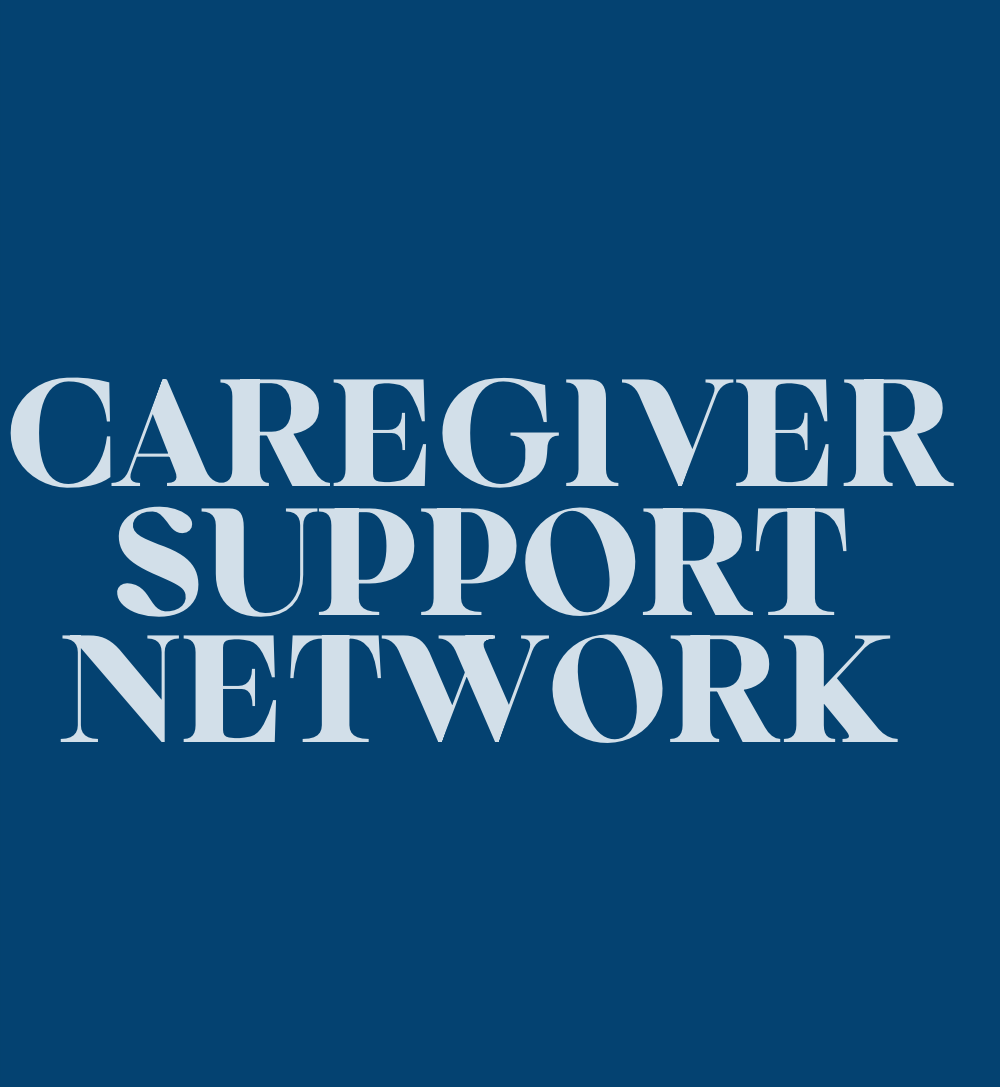Caregiver Support
Navigating Waves of Grief: Coping With Loss
Keen to understand the unpredictable nature of grief waves? Discover essential coping strategies and support systems in navigating loss.

When dealing with loss and managing waves of sorrow, it's important to recognize that grief comes in unpredictable surges and fluctuations. These waves vary in strength and duration, influenced by our coping strategies and past experiences. Establishing a support system can help stabilize us during overwhelming moments, and it's essential to acknowledge that grief is a natural response, affirming our emotions. Remember, embracing support and validation are fundamental to steadying ourselves amidst these feelings. Keep exploring ways to manage and understand your emotions; there's more to learn about how to maneuver this journey of grief and loss.
Key Takeaways
- Accept the range of emotions naturally.
- Seek support from counseling and support groups.
- Embrace self-care practices like journaling and meditation.
- Understand the healing process and moving forward.
- Engage in emotional expression for healing and growth.
Understanding Grief Waves
Experiencing grief waves is a tumultuous journey marked by unpredictable surges and sudden ebbs that can catch us off guard. Grief waves, like the ebb and flow of the ocean, come in varying intensities and durations. Some may last only a few minutes, while others linger for hours or even days. Factors such as personal coping mechanisms, past losses, and the nature of the current loss all play a role in how intensely these waves traverse over us.
During these turbulent times, having a support system in place can make a significant difference in maneuvering the waves of grief. Whether it's friends, family, or a counselor, having someone to lean on can help stabilize us when the waves feel overwhelming. Understanding that grief is a natural response to loss and that everyone experiences it differently can also provide comfort in knowing that what we're feeling is valid.
In the next section, we'll explore coping strategies to help manage these grief waves more effectively.
Coping Strategies for Grief

When dealing with grief, it's crucial to accept your emotions naturally and recognize that it's okay to feel a range of feelings.
Seeking support from others, whether through counseling or support groups, can offer comfort and guidance during this difficult time.
Accepting Emotions Naturally
Traversing through waves of grief involves embracing and accepting all natural emotions that arise, including sadness, anger, guilt, and confusion. It's crucial to acknowledge these feelings as part of the healing process. Engaging in self-care practices such as journaling, meditation, or exercise can help cope with the intense emotions that come with grief. Seeking support from friends, family, or therapists is also essential to navigate and process these natural emotional responses to loss. Remember, experiencing a range of emotions is normal and necessary for healing and moving forward. Embrace vulnerability and allow yourself to feel and express your emotions authentically; this authenticity is key to facilitating the healing process.
| Accepting Emotions Naturally | |
|---|---|
| 1. Embrace all emotions | Sadness, anger, guilt, and confusion |
| 2. Engage in self-care practices | Journaling, meditation, exercise |
| 3. Seek support | Friends, family, therapists |
| 4. Understand the healing process | Normal range of emotions, moving forward |
Seeking Support From Others
Traversing waves of sorrow involves seeking assistance from others as an important coping strategy to navigate the unpredictable emotions that accompany loss. Engaging in online group therapy for grief support can be incredibly beneficial, with 70% of participants seeing significant improvements in just 8 weeks.
Joining grief support groups or participating in online sessions led by licensed therapists, like those offered by Grouport, can provide a sense of community and understanding during difficult times. Additionally, learning emotional regulation techniques through therapies such as Dialectical Behavior Therapy (DBT) can help in coping with grief.
It's vital to practice self-compassion and seek routine support to help adapt to the ebb and flow of grief, paving the way for healing and growth.
Seeking Support and Guidance
When facing grief, it's essential to seek support and guidance to navigate the challenging emotions that come with loss. Supportive communities and professional counseling services can offer valuable resources and strategies to help cope with the waves of grief.
Supportive Communities for Healing
Traversing waves of grief becomes more manageable when seeking support and guidance from supportive communities for healing. Support groups like Grouport offer online group therapy specifically tailored for coping with grief and loss. These sessions, led by licensed therapists, have shown a 70% improvement rate in just 8 weeks.
Engaging in online group therapy provides not only routine support but also connections with others facing similar challenges. In these healing communities, participants can learn emotional regulation techniques such as Dialectical Behavior Therapy (DBT) in a group setting.
Joining a grief and loss group support session can offer effective and affordable treatment, though space is limited. Embracing these healing communities can provide the essential support needed while maneuvering through the complexities of grief and loss.
Professional Counseling Services
How can professional counseling services offer expert guidance and support for traversing the waves of grief? Professional counseling services specialize in helping individuals navigate the complexities of the grieving process. Through grief therapy, counselors provide a safe and understanding environment to explore emotions, develop coping strategies, and work towards healing. Seeking support from these services can lead to significant improvements in mental health and overall well-being. Here is a table to show the benefits of professional counseling services:
| Benefits of Professional Counseling Services |
|---|
| Safe space to express emotions |
| Specialization in grief therapy |
| Tools for coping with loss and managing emotions |
Importance of Self-Care

Prioritizing self-care during grief greatly enhances overall well-being and resilience. When we take care of ourselves, we're better equipped to manage the intense emotions that come with grief.
Activities like eating nutritious meals, engaging in exercise, and getting enough rest can help us navigate through the healing process. It's essential to show ourselves compassion and engage in nurturing activities during this challenging time.
By establishing consistent self-care routines, we can create a sense of stability and comfort in the midst of loss. Coping with grief is a journey, and practicing self-care is a crucial component in moving towards healing.
Expressing Emotions Healthily

Moving through grief involves actively engaging with and expressing our emotions in a vital manner. To do so effectively, there are several strategies we can employ:
- Utilize Creative Outlets: Expressing emotions through art, writing, or music can be a powerful way to process complex feelings. Engaging in these creative activities allows for a non-verbal form of expression that can help us navigate our emotions during times of grief.
- Talk to a Trusted Friend: Sharing our emotions with a trusted friend, family member, or therapist can provide validation and support. Opening up to someone we trust creates a safe space for us to express our feelings and feel understood, which is essential in the grieving process.
- Engage in Physical Activities: Physical activities like yoga or exercise can help release pent-up emotions and promote emotional well-being. Moving our bodies not only benefits us physically but also aids in regulating our emotions and improving our overall mental state.
Honoring the Process of Grieving

Acknowledging and accepting the unpredictable waves of emotions that accompany loss is essential to honoring the process of grieving. Understanding that grief doesn't follow a linear path but rather ebbs and flows can help us cope with the intensity of emotions that arise. It's vital to give ourselves permission to feel these emotions without judgment, allowing the healing process to unfold naturally. By recognizing the personal factors that influence our grief journey and embracing the support of others, we can navigate this challenging time with greater understanding and compassion.
Honoring the process of grieving involves not rushing through the pain but instead allowing ourselves the time and space to heal. Seeking support from friends, family, or a counselor can provide comfort and guidance during this difficult period. Engaging in rituals or activities that help us remember and celebrate the life of the person we've lost can also contribute to the healing process. By actively participating in these practices, we pay tribute to the significance of our loss and find solace in the memories we hold dear.
Finding Comfort in Rituals

Indulging in comforting rituals can provide solace and structure during the grieving process. Engaging in these practices can help us navigate the emotional waves of loss with a sense of purpose and connection. Here are three ways rituals can offer comfort and healing:
- Honoring Memories: Rituals allow us to honor the memory of our loved ones in a meaningful way, creating a space for healing and reflection. By engaging in activities that hold significance, we pay tribute to their life and impact on ours.
- Creating Connection: Participating in rituals can create a sense of connection to the past, present, and future. These practices provide a way to express our emotions and connect with others who are also grieving, fostering a sense of community and support.
- Finding Closure: Rituals offer a form of closure by providing a structured way to cope with the emotional impact of loss. They can help us process our feelings, find comfort in tradition, and begin the journey towards healing.
Embracing Healing and Closure

Embracing healing and closure after a loss involves actively engaging with our emotions and seeking support from trusted individuals. When we allow ourselves to acknowledge and process our feelings, we take a significant step towards healing. Remember that there's no specific timeline for closure in grief; it's a personal journey unique to each individual.
To aid in the healing process, engaging in self-care practices and mindfulness activities can be beneficial. Taking time for activities that bring comfort and peace can help soothe the pain of loss. Additionally, creating rituals or remembrance ceremonies can provide closure and honor the memory of our loved ones. These rituals can serve as a way to celebrate the life of the person we've lost and find solace in the memories we hold dear.
Accepting the ebb and flow of grief waves is important for embracing healing and finding closure. By allowing ourselves to experience and express our emotions, seeking support, and engaging in self-care practices, we can gradually move towards healing and finding peace in the midst of loss.
Frequently Asked Questions
How Do You Deal With Grief Waves?
When facing grief waves, we cope by acknowledging shifting emotions, showing self-compassion, seeking support, and accepting the ups and downs for healing. By recognizing the ebb and flow, we navigate the journey of grief together.
What Are the 3 C's of Grief?
We didn't cause it, can't control it, can't cure it. These principles remind us not to blame ourselves, accept the loss, and focus on coping strategies. Shifting focus helps in healthy grieving and finding healing.
What Are the 5 Stages a Person Must Move Through in Regards to Coping With Loss and the Grieving Process?
We move through denial, anger, bargaining, depression, and acceptance in coping with loss. These stages vary in intensity and order, providing a framework for understanding grief. It's a unique journey for each person, not always linear but essential for healing.
How Do You Deal With Grief Cycle?
We handle the grief cycle by acknowledging its unpredictability and embracing the varying intensity that each wave brings. We find solace in personal factors and coping mechanisms, understanding that moving through loss is a unique journey for each of us.
Conclusion
To sum up, as we navigate the waves of grief, it's crucial to bear in mind that healing takes time and patience. By employing coping strategies, seeking support, and practicing self-care, we can gradually find comfort and closure in our journey of grieving.
Remember, grief is a natural process that each person experiences differently, so it's vital to honor your emotions and find ways to express them healthily. Embracing healing rituals can also provide solace and aid in the healing process.
Albert brings a wealth of knowledge and expertise to our writing team. With a background in caregiving and a deep understanding of the challenges faced by caregivers, Albert’s writing resonates with authenticity and empathy. He is committed to delivering high-quality content that empowers and supports caregivers on their journey.
Caregiver Support
How Do Canes Prevent Falls?
Mobilize safely and confidently with canes to prevent falls by enhancing stability and redistributing weight effectively.
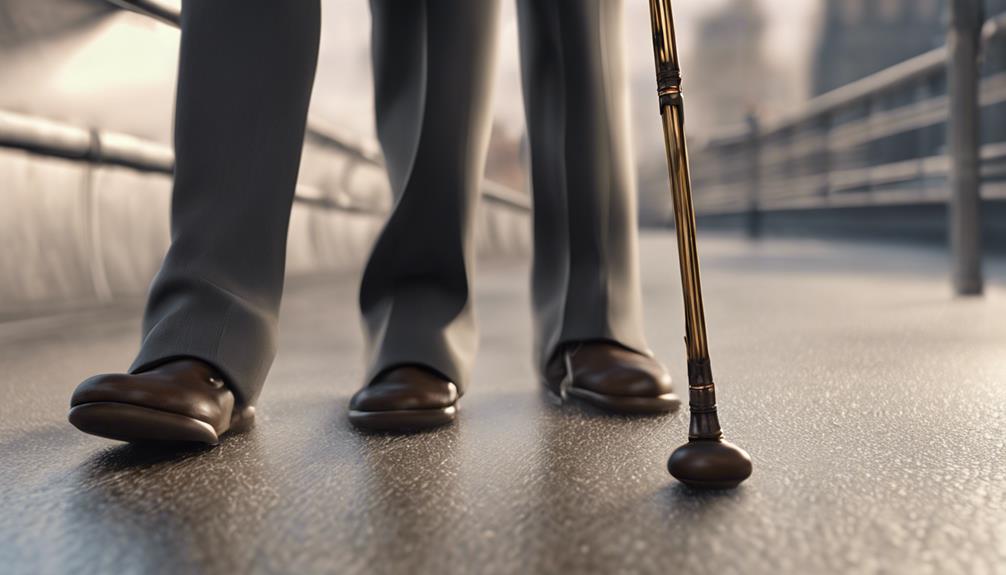
Using canes strategically enhances stability and redistributes weight effectively to prevent falls. Canes assist by providing an additional point of contact with the ground, improving balance and reducing the risk of stumbling. Proper posture and alignment while standing upright with the cane relieve pressure on joints and promote awareness for fall prevention. By maneuvering uneven terrain with canes, stability on slopes and tricky surfaces increases, aiding in slip prevention. Canes not only prevent falls but also enhance confidence and independence in daily activities. Further insights into the benefits of canes for fall prevention and mobility are available.
Key Takeaways
- Canes distribute weight effectively, reducing the risk of falls.
- They provide an additional point of contact with the ground for stability.
- Canes promote safer mobility by aiding in balance and support.
- Proper cane use enhances confidence, preventing stumbles and falls.
- Canes offer independence and safety, decreasing the likelihood of falls.
Importance of Proper Posture
Maintaining proper posture when using a cane is essential for distributing weight evenly and reducing the risk of falls. Correct posture guarantees ideal balance, stability, and body alignment.
By standing upright with the cane, joint pressure is relieved, enhancing overall stability. Improving body posture not only supports better weight distribution but also promotes visibility and awareness of one's surroundings, essential for fall prevention.
When the body is aligned correctly, the cane becomes an extension of support, aiding in maintaining an upright stance. This upright stance not only assists in distributing weight effectively but also helps in overcoming obstacles with increased confidence.
Hence, paying attention to body posture while using a cane is key to maximizing its benefits in relation to stability, balance, and fall prevention. Remember, a proper posture not only supports physical well-being but also boosts confidence and independence in daily activities.
Enhanced Stability and Support

Enhancing stability and support is a primary function of using canes, as they redistribute body weight and reduce the risk of losing balance. When using a cane for stability, it's essential to understand how it provides support and aids in preventing falls. Here are three key aspects to take into account:
- Improved Equilibrium: Canes offer a wider base of support, enhancing equilibrium during movement. By increasing the area of support, canes help in balancing the body weight effectively, reducing the chances of losing balance and falling.
- Enhanced Gait Patterns: Canes assist in improving gait patterns by providing additional support for weaker legs. This support helps in maintaining proper walking techniques and reduces the risk of stumbling or tripping, ultimately preventing falls.
- Reduced Fatigue: By decreasing the load on lower extremities, canes help in minimizing fatigue during walking. This reduction in fatigue not only improves overall mobility but also decreases the likelihood of falls due to tired muscles.
Reducing Tripping and Stumbling
Canes play an important role in minimizing the risk of tripping and stumbling, contributing to overall fall prevention by providing stability and support. When walking with a cane, it helps in reducing tripping by enhancing stability and balance.
The cane acts as a support system, aiding in weight distribution and relieving strain on muscles and joints. By assisting with maintaining proper posture and alignment, canes decrease the chances of stumbling. It's vital to use the cane on the side opposite to your weaker leg to provide the necessary support.
When encountering obstacles or uneven surfaces, the cane can help navigate these challenges, preventing falls that may result from tripping. Pay attention to your gait while using the cane, ensuring a smooth and steady stride. Remember that proper use of the cane not only reduces the risk of tripping but also enhances overall stability, making each step safer.
Navigating Uneven Terrain Safely

Canes play an essential role in maintaining stability on slopes and balancing on gravel. They help distribute weight effectively, assisting in maneuvering uneven terrain with greater ease.
Stability on Slopes
Traversing uneven terrain safely, especially on slopes, requires utilizing a cane to distribute weight evenly and maintain balance to prevent slips and falls. When moving on slopes with a cane, consider these key tips for stability and safety:
- Proper Positioning: Position the cane on the side of your body facing the slope to enhance stability and support during uphill or downhill movement.
- Nonskid Rubber Tips: Opt for canes with nonskid rubber tips to improve traction on slopes, reducing the risk of sliding on challenging surfaces.
- Weight Distribution: By assisting in weight distribution and providing a point of contact for stability, canes play an important role in preventing falls on uneven terrain like slopes.
Balancing on Gravel
Traversing uneven terrain like gravel requires maintaining balance and stability to prevent slips and falls. Canes play an essential role in moving through such surfaces by providing the necessary support and stability.
When walking on gravel with a cane, make sure the rubber tip grips the ground firmly to enhance traction and reduce the risk of slipping. By using a cane, you can distribute your weight more evenly, which helps prevent tripping and falling. The extended base of support offered by the cane allows for better stability and confidence while walking on gravel.
Improving Confidence and Independence
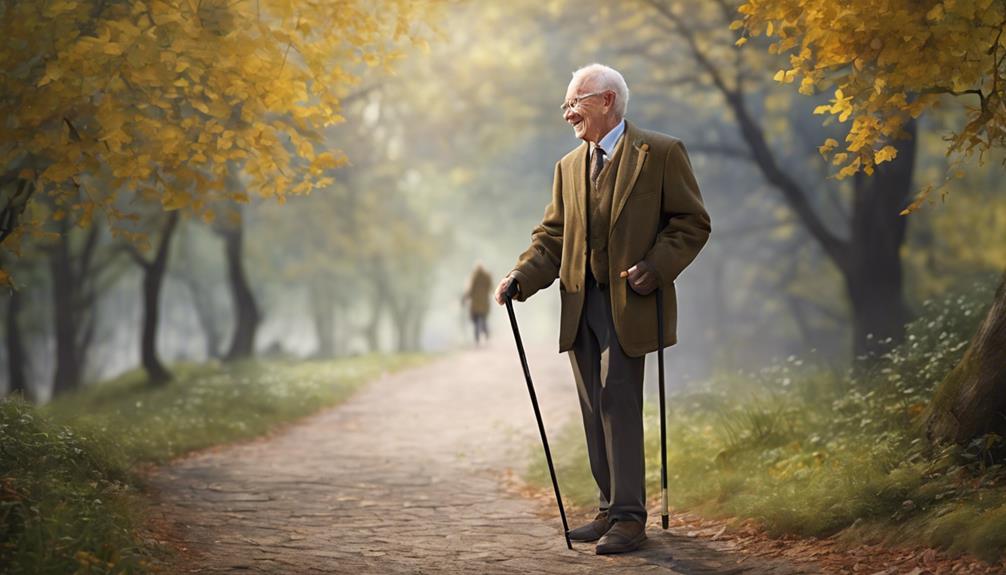
Enhancing one's confidence and independence is achievable through the use of a cane, providing stability and support for improved mobility and daily activities. Using a cane can greatly impact one's sense of self-assurance and capability.
Here are three ways canes help in improving confidence and independence:
- Enhanced Stability: Canes offer stability while walking, helping individuals maintain balance and preventing falls. This stability gives users the assurance to move around more freely and independently.
- Increased Support: By providing support, canes help individuals navigate various terrains and environments with more confidence. This support reduces the fear of falling and encourages independence in daily activities.
- Improved Mobility: Proper use of a cane can enhance mobility, allowing individuals to move around more easily and engage in a wider range of activities. This increased mobility boosts confidence and promotes independence in everyday life.
Role in Fall Prevention Strategies
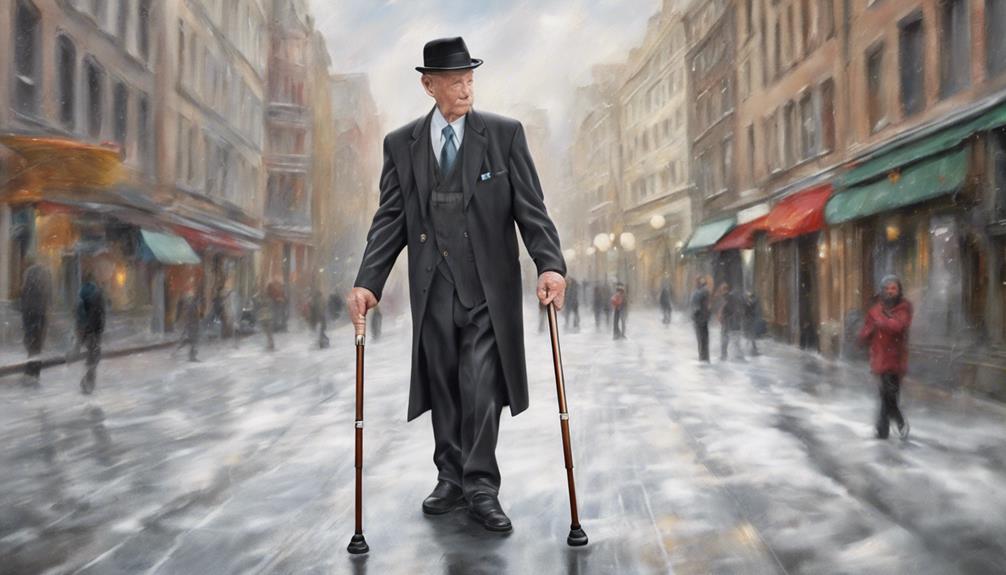
In implementing fall prevention strategies, canes play a crucial role by providing additional support and stability to individuals at risk of falling. Canes aid in redistributing weight, enhancing balance, and decreasing the likelihood of losing balance and experiencing a fall. By supporting a portion of the body weight and offering a secure base for walking, canes help lessen the impact of falls.
Research indicates that not using canes during falls can lead to more severe injuries, underscoring the necessity of incorporating canes into daily routines for injury prevention. When integrated into fall prevention programs alongside interventions like strength training and environmental modifications, canes greatly diminish the risk of falls among older adults.
Ensuring proper cane usage, maintaining the equipment, and incorporating it into daily activities can enhance stability, reduce the likelihood of falls, and contribute to a safer living environment. Canes are valuable tools in fall prevention, promoting safety and well-being for individuals at risk of falls.
Impact on Mobility and Safety
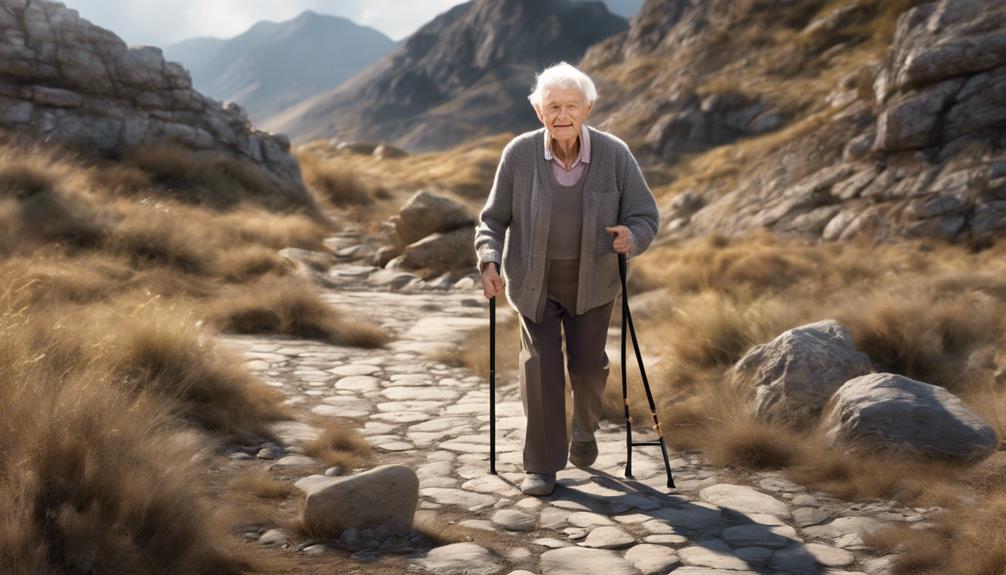
Using a cane can provide essential support for our mobility needs, helping us move around more confidently.
Additionally, the safety features of a cane can greatly reduce the chances of accidents or falls.
Mobility Support Benefits
Canes play an important role in supporting mobility and enhancing safety by providing stability and balance for older adults. When considering the mobility support benefits of canes, we must acknowledge their impact on weight redistribution, balance improvement, and injury prevention:
- Weight Redistribution: Canes help redistribute weight off the lower body, reducing strain on joints and muscles, which is especially beneficial for older adults with mobility issues.
- Balance Improvement: By acting as a walking aid, canes assist in improving balance and stability, allowing individuals to navigate daily activities with greater ease and confidence.
- Injury Prevention: Proper use of canes can significantly decrease the risk of falls and related injuries, promoting independence and enhancing overall safety for older adults.
Safety Enhancement Features
Enhancing stability and promoting safer mobility, the safety features of canes play a crucial role in supporting older adults' independence and confidence. Rubber tips on canes prevent slipping, ensuring stability on different surfaces and reducing the risk of falls.
By supporting up to 25% of the body weight, canes help redistribute pressure away from weaker limbs, improving balance and reducing the chances of stumbling. Properly sized canes also encourage correct posture and gait, enhancing overall mobility and safety.
To further prevent falls, using a cane on the side opposite the weaker leg promotes even weight distribution, offering better support during movement. These safety enhancements not only aid in fall prevention but also boost older adults' confidence in their ability to move safely and independently.
Benefits for Older Adults
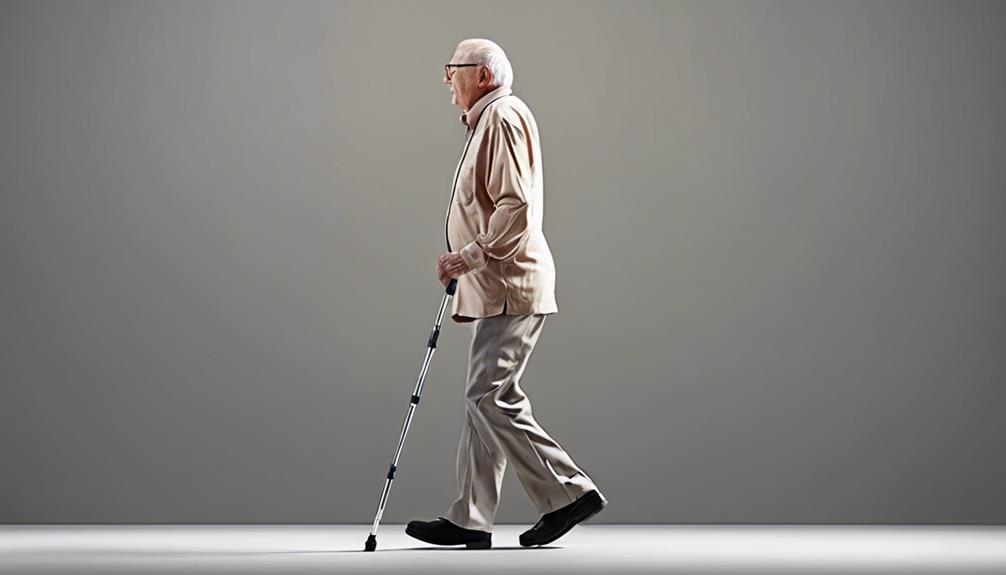
Improving stability and support for older adults, canes play an essential role in preventing falls by distributing weight effectively. Here are three key benefits of using a cane for older adults:
- Enhanced Balance: Canes assist in maintaining balance by providing an additional point of contact with the ground, reducing the chances of losing equilibrium while walking.
- Improved Mobility: Properly sized canes help relieve pressure on joints and muscles, making movement safer and more comfortable for older individuals.
- Increased Independence: By reducing the fear of falling, canes boost confidence in movement, enabling older adults to maintain their independence and engage in daily activities with greater assurance.
In addition to these benefits, canes offer a cost-effective solution to enhance mobility and prevent falls in the elderly population. Incorporating a cane into daily activities can significantly improve overall safety and well-being for older adults, promoting a more active and independent lifestyle.
Frequently Asked Questions
How Does a Cane Keep You From Falling?
Using a cane keeps us from falling by providing extra support and stability. When we hold the cane in the hand opposite our weaker leg, it helps distribute weight evenly and maintain proper balance while walking.
This assists in improving gait patterns, reducing the chance of tripping or stumbling. Canes also offload weight from the lower extremities, lessening strain on joints and muscles, which ultimately helps prevent falls.
How Do You Prevent Falls With a Cane?
When utilizing a cane to prevent falls, we guarantee proper balance and stability. By correctly positioning the cane on the side of our stronger leg, we distribute weight evenly, reducing the risk of tripping or stumbling.
Moving the cane and weaker leg in sync maintains stability and prevents falls. With a properly sized cane supporting at least 25% of our body weight, we enhance stability and minimize the likelihood of accidents.
How Does a Cane Help With Balance?
Canes help with balance by providing a wider base of support, distributing weight more evenly, and enhancing stability during walking. They improve gait mechanics, posture, and alignment.
By increasing proprioceptive feedback, canes help adjust to terrain changes, reducing stumbling. Properly sized and used canes boost confidence, independence, and prevent falls in older adults.
These benefits combine to offer significant support in maintaining balance and preventing falls.
Do Walking Sticks Help Prevent Falls?
Yes, walking sticks can help prevent falls by providing crucial support and stability while moving. They distribute weight evenly, improving balance and reducing the risk of falls.
Studies show that walking sticks greatly decrease the chances of falling and related injuries in older adults. By enhancing mobility and confidence, walking sticks play an essential role in ensuring safety and independence during daily activities.
Conclusion
To sum up, canes play a vital role in preventing falls by providing stability, support, and confidence to individuals.
For instance, Sarah, an older adult, was able to navigate her daily walk with ease and confidence using a cane, avoiding potential hazards and maintaining her independence.
By incorporating a cane into daily activities and following proper usage techniques, individuals can greatly reduce their risk of falls and improve their overall safety and mobility.
Albert brings a wealth of knowledge and expertise to our writing team. With a background in caregiving and a deep understanding of the challenges faced by caregivers, Albert’s writing resonates with authenticity and empathy. He is committed to delivering high-quality content that empowers and supports caregivers on their journey.
Caregiver Support
Where Can You Donate Adult Diapers?
Tackle the question of where to donate adult diapers with impactful options that make a difference in the lives of those in need.

You can donate adult diapers at local senior care facilities, nonprofit organizations, homeless shelters, community service centers, and medical supply donation drives. At these places, your donations help individuals in need of essential incontinence products. Senior care facilities benefit seniors with limited access to affordable supplies. Nonprofit organizations collaborate with suppliers to guarantee access to these products. Homeless shelters greatly appreciate donations to support individuals facing incontinence challenges. Community service centers help seniors, disabled adults, and those with financial struggles. Medical supply donation drives focus on easing the financial burden for caregivers. Learn more about where to donate adult diapers for a meaningful impact.
Key Takeaways
- Local Senior Care Facilities accept donations of adult diapers to benefit residents with incontinence.
- Nonprofit Organizations distribute adult diapers to those in need, ensuring access to essential products.
- Homeless Shelters welcome donations of adult diapers to support homeless individuals facing incontinence.
- Community Service Centers collect and distribute incontinence products to seniors, disabled adults, and those facing financial challenges.
- Medical Supply Donation Drives gather unused adult diapers to assist individuals with limited resources and alleviate financial strain on caregivers.
Local Senior Care Facilities
Donating adult diapers to local senior care facilities can greatly benefit residents with incontinence by providing much-needed support and relief. Many seniors in care facilities rely on donated adult diapers due to limited access to affordable incontinence products. By contributing to a Diaper Bank or nonprofit agency, you can help guarantee the financial burden on both caregivers and residents.
Unused adult diapers can make a significant difference in the comfort and well-being of seniors in care facilities. These donations not only provide practical assistance but also show compassion and care for those in need. Check with your local senior care facility for specific guidelines and donation procedures for adult diapers. Your generosity can have a direct impact on improving the quality of life for seniors facing incontinence challenges.
Consider reaching out to nonprofit organizations that specialize in distributing incontinence products to make sure your donations reach those who need them most.
Nonprofit Organizations
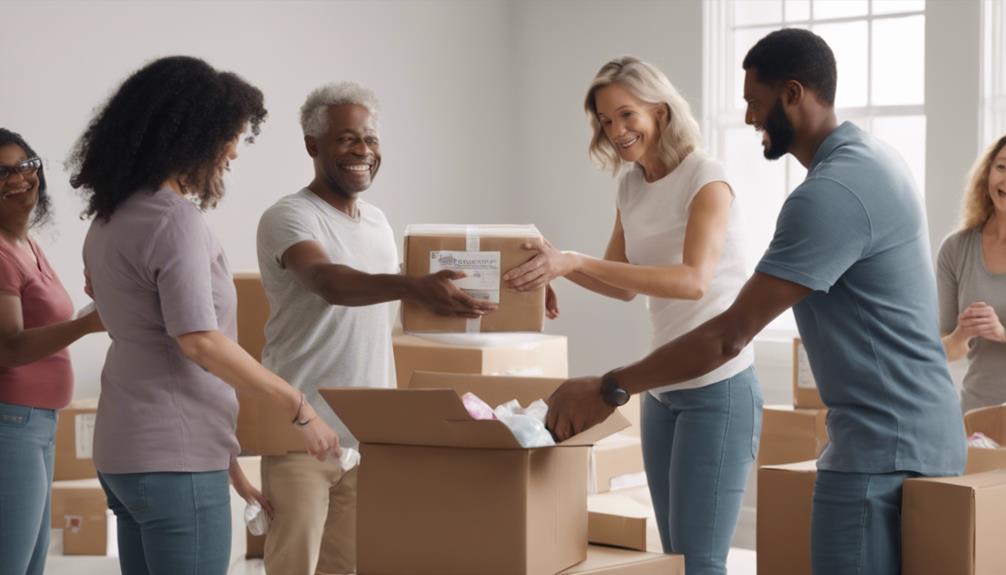
When it comes to supporting individuals in need of adult diapers, nonprofit organizations play a vital role in guaranteeing access to essential incontinence products. These organizations, such as the National Diaper Bank Network, are committed to distributing adult diapers to those who require them. Donating unused adult diapers to local senior centers is another way to support individuals in need, as these centers often accept such donations for redistribution to those in need. By donating to nonprofit organizations that specialize in providing incontinence supplies, you help maintain dignity and comfort for individuals struggling with incontinence.
To further emphasize the importance of supporting nonprofit organizations in this endeavor, here is a table highlighting key points about their role in distributing adult diapers:
| Role of Nonprofit Organizations |
|---|
| Distribute adult diapers to those in need |
| Collaborate with manufacturers and suppliers |
| Guarantee access to essential incontinence products |
| Vital in addressing challenges of incontinence |
Homeless Shelters
Supporting homeless shelters with donations of adult diapers is an essential way to provide important support for individuals experiencing homelessness. Homeless shelters often face a high demand for adult diapers due to limited access to hygiene products. Many homeless individuals struggle with incontinence issues and may not have the means to purchase adult diapers themselves.
By donating adult diapers to homeless shelters, you can help maintain dignity and comfort for those in need. Your contribution can greatly impact the quality of life for vulnerable populations. These donations play a critical role in ensuring that homeless individuals have access to necessary supplies to manage their incontinence and stay clean and comfortable.
Consider reaching out to local homeless shelters in your community to inquire about their specific needs regarding adult diapers. Your generosity can make a meaningful difference in the lives of those experiencing homelessness.
Community Service Centers
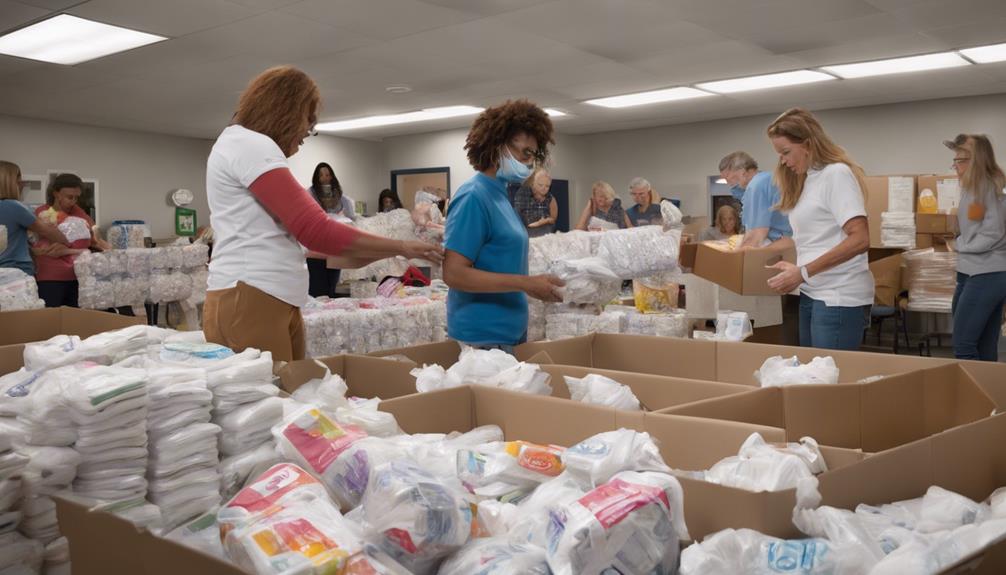
Community service centers, such as local senior centers, homeless shelters, and churches, serve as important hubs for accepting donations of adult diapers. These centers play a critical role in collecting and distributing incontinence products to those in need within the community.
By donating adult diapers to these centers, you can directly impact the lives of seniors, disabled adults, and individuals facing financial challenges. Many organizations and nonprofits collaborate with community service centers to guarantee the availability of incontinence products for those who require them.
Your donations help support individuals struggling with incontinence, enhancing their quality of life and providing them with essential supplies. Consider reaching out to your local community service centers to inquire about their specific needs for incontinence products and how you can contribute through donations. Your generosity can make a significant difference in the well-being of those in need.
Medical Supply Donation Drives
Medical supply donation drives actively collect unused adult diapers to assist individuals in need, particularly focusing on alleviating the financial strain on caregivers. These drives serve as vital resources for those facing incontinence challenges by providing essential incontinence supplies to individuals with limited resources.
By donating adult diapers to these drives, you can directly impact the quality of life for those in need. Medical supply donation drives play a significant role in ensuring that individuals with incontinence have access to necessary supplies that can improve their daily lives. Supporting these drives not only helps individuals in need but also eases the burden on caregivers who often face financial challenges in providing these essential products.
Participating in medical supply donation drives is a meaningful way to contribute to the well-being of others and make a positive difference in your community.
Frequently Asked Questions
Where Is the Best Place to Donate Diapers To?
When looking to help others, we aim to donate where it's most needed. Supporting local senior centers, homeless shelters, or organizations like the Greater DC Diaper Bank guarantees our contributions directly benefit those in need.
What Can I Do With Unused Incontinence Pads?
Unused incontinence pads can be shared with those in need at senior centers, shelters, and churches. Donating adult diapers supports seniors, disabled individuals, and those facing financial challenges. It's important as insurance often doesn't cover these costs.
Where Can I Get Adult Pull Ups for Free?
We can find adult pull-ups for free at community organizations, senior centers, churches, and homeless shelters. Donations from individuals and sponsors support these initiatives. Social service agencies and outreach programs also provide free adult pull-ups for those in need.
Where Can I Donate Adult Diapers in Michigan?
When it comes to donating adult diapers in Michigan, rest assured! Various organizations like The Detroit Area Diaper Bank and the Michigan Diaper Bank welcome donations to support individuals with incontinence challenges.
Conclusion
To sum up, donating adult diapers can make a huge impact on those in need. Whether you choose to give to a local senior care facility, nonprofit organization, homeless shelter, or community service center, your donation will be greatly appreciated.
Remember, every diaper donated helps someone in need and shows kindness and compassion towards others.
So, let's come together and make a difference by donating adult diapers today!
Albert brings a wealth of knowledge and expertise to our writing team. With a background in caregiving and a deep understanding of the challenges faced by caregivers, Albert’s writing resonates with authenticity and empathy. He is committed to delivering high-quality content that empowers and supports caregivers on their journey.
Caregiver Support
How to Prevent Falls: A Complete Guide
Start your journey to prevent falls by securing your home and improving balance with essential tips in this comprehensive guide.
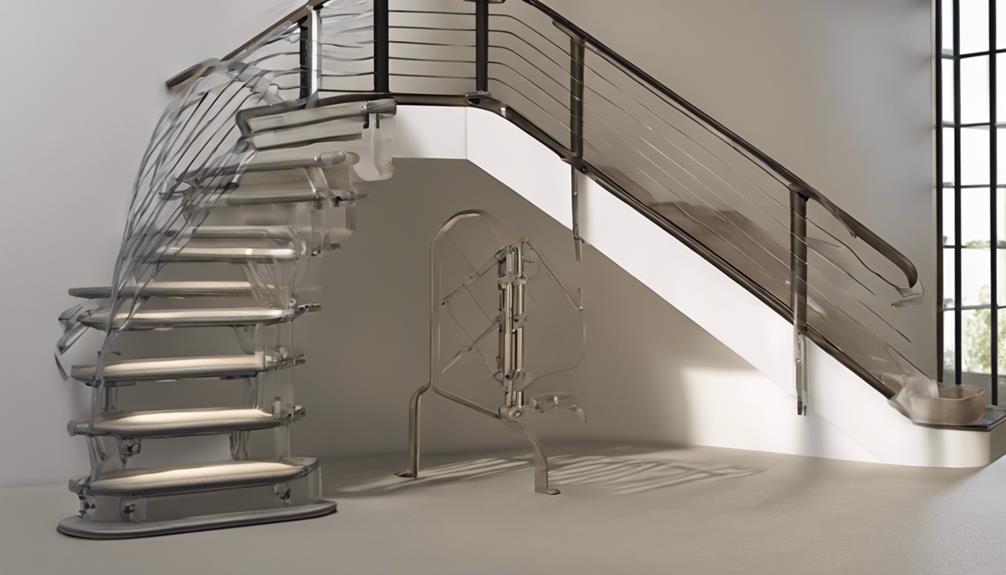
To prevent falls effectively, focus on improving home safety. Start by securing loose rugs, optimizing lighting, and decluttering walkways to minimize hazards. Regularly assess your risk factors, including health conditions and medications that might affect balance. Engage in balance exercises to enhance stability. Consider installing assistive devices like grab bars and handrails. Additionally, ensure proper footwear with good traction and support. These measures, along with maintaining a healthy lifestyle, play vital roles in preventing falls. Mastering fall prevention methods is key for overall well-being and safety. More insights await on enhancing your fall prevention efforts.
Key Takeaways
- Conduct falls prevention risk assessments to identify hazards and individual risk factors.
- Enhance home safety by installing handrails, grab bars, and improving lighting.
- Improve balance through regular exercise and physical activity.
- Wear appropriate footwear with good traction and support.
- Educate on falls prevention, maintain a healthy diet, and implement safety measures.
Risk Factors for Falls
When evaluating the risk factors for falls, we must take into account a variety of environmental, biological, and medical factors that can greatly enhance the likelihood of a fall occurrence. Environmental hazards such as loose rugs, poor lighting, and cluttered walkways pose significant risks for falls. To prevent falls, it's important to address these hazards by ensuring clear pathways, adequate lighting, and secure carpets in the living environment.
Additionally, health conditions like Parkinson's disease, COPD, and certain medications can compromise balance and increase the risk of falling. Regular balance exercises can help improve stability and reduce the likelihood of falls among individuals with these health conditions. Furthermore, using assistive devices like grab bars in bathrooms and handrails on stairs can provide essential support and aid in fall prevention.
Common Reasons for Falls

After identifying the risk factors for falls, it's important to understand the common reasons that contribute to these incidents. Unintentional falls are the leading cause of injury for seniors, leading to numerous emergency department visits annually.
Among older adults, falls in the home, slips, trips, and medication side effects are prevalent reasons for falls. Biological factors and chronic conditions such as Parkinson's disease and COPD also elevate the risk of falling.
Environmental hazards like loose rugs and poor lighting play a significant role in increasing fall risks. Additionally, certain medications with side effects like drowsiness or dizziness can raise the likelihood of falling.
To prevent falls, it's essential to address these common reasons by ensuring home safety, eliminating environmental hazards, and monitoring medication side effects carefully. By taking proactive measures to mitigate these factors, the risk of falls can be greatly reduced, promoting safety and well-being among seniors.
Falls Prevention Risk Assessment
Regularly conducting falls prevention risk evaluations is vital in identifying individual risk factors and tailoring personalized prevention strategies for seniors and individuals at risk. These evaluations help healthcare professionals evaluate various aspects such as health conditions, environmental hazards, balance and gait, medication use, vision, and home safety. By evaluating these factors, tailored falls prevention interventions can be implemented to reduce the risk of falls.
A thorough falls prevention risk evaluation may include a home safety assessment to address potential hazards in the living environment. Moreover, tracking changes in individual risk factors over time through regular evaluations allows for the adjustment of prevention strategies as needed. Ensuring a thorough assessment of all relevant factors and implementing personalized strategies based on the evaluation results are important steps in effectively preventing falls among seniors and individuals at risk.
Conducting balance and gait assessments alongside evaluating other contributing factors can greatly enhance the effectiveness of falls prevention efforts.
Home Adaptations for Fall Prevention

How can simple home adaptations greatly reduce the risk of falls for seniors and individuals at risk?
Installing handrails, grab bars, and non-slip bath mats in important areas of the home can greatly improve balance and reduce fall risks. Enhancing lighting and eliminating tripping hazards like loose rugs are essential steps in ensuring home safety and preventing falls.
Proper handrails on staircases and non-skid mats in the bathroom play an important role in reducing the chances of accidents. Consulting healthcare professionals for advice on falls prevention products and services can further optimize your efforts in preventing falls at home.
Additionally, documenting falls, assisting individuals into a comfortable position, and keeping them warm are key safety measures that should be integrated into your home adaptations for fall prevention routine. By implementing these practical tips and making necessary adjustments, you can create a safer home environment that minimizes the risk of falls and promotes overall well-being.
Preventive Measures for Falls
Implementing preventive measures for falls is essential in maintaining safety and well-being, requiring a proactive approach to home modifications and lifestyle choices. To prevent falls effectively, it's critical to improve balance through exercise classes and regular physical activity. Additionally, conducting falls prevention risk assessments can help identify potential hazards in the home environment and address them promptly. Wearing appropriate footwear that provides good traction and support is also essential in reducing the risk of falls.
Furthermore, making adjustments to the home environment, such as installing handrails, grab bars, and ensuring proper lighting, can greatly enhance fall prevention efforts. Considering adaptations like ramps and additional lighting, especially in areas prone to slips or trips, can further minimize the risk of falls. Engaging in education and exercise classes, maintaining a healthy diet, and prioritizing safety measures like appropriate footwear are key preventive measures to safeguard against falls and promote overall well-being.
Fall Prevention Equipment Installation
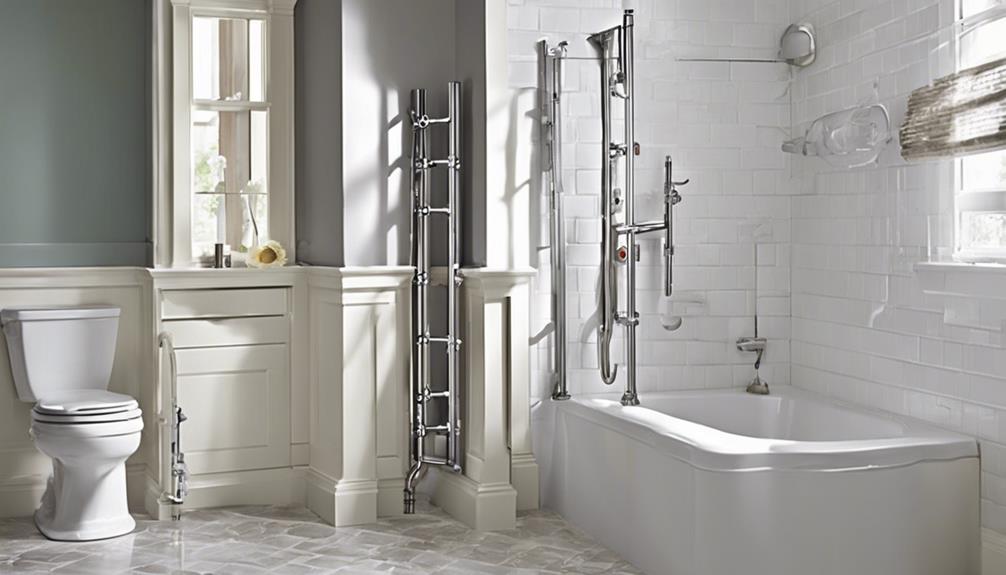
When considering fall prevention, the installation of key equipment such as handrails and grab bars is essential to reducing the risk of accidents. Installing handrails in important areas like staircases and bathrooms provides much-needed support for individuals. Similarly, grab bars near toilets and showers are essential for preventing slips and falls.
Bed rails can offer stability, aiding individuals in safely getting in and out of bed. Non-slip bath mats in the shower and bathroom enhance safety by reducing the likelihood of slipping on wet surfaces. Proper lighting throughout the home, especially in areas like hallways and staircases, is fundamental for fall prevention.
Ensuring that these fall prevention equipment items are correctly installed in key areas can greatly enhance safety and reduce the risk of accidents. By paying attention to these details and incorporating these safety measures, individuals can create a safer environment that minimizes the chances of falls.
Response Protocol for a Fall

In the event of a fall, swift action is vital to guarantee the individual's safety and well-being. Following the F-A-L-L acronym is key for the immediate response protocol after a fall. Here's how to handle the situation effectively:
- F: Find out what happened: Assess the situation to understand the cause of the fall.
- A: Assess the individual: Check for injuries and provide immediate assistance.
- L: Listen to the person: Understand their needs and concerns post-fall.
- L: Look for help: Seek prompt medical help for proper assessment and treatment.
After addressing the immediate concerns, providing recovery support such as personal home assistance or physiotherapy can aid in the healing process. Additionally, it's vital to address both the physical and mental health effects post-fall, including fear of falling and depression, for overall well-being.
Taking preventive measures to reduce the risk of future falls is a proactive approach to fall prevention.
Frequently Asked Questions
What Are the 5 P's of Fall Prevention?
The 5 P's of fall prevention are Proper Planning, Prevention, Preparedness, Proactivity, and Promptness. These principles stress proactive measures to reduce fall risks and create a safe environment.
Proper planning involves identifying potential fall hazards and taking preventive actions. Prevention focuses on strategies to avoid falls before they happen. Preparedness means being ready to respond quickly in case of a fall to minimize injuries.
Proactivity and promptness are key to preventing falls effectively.
What Are 3 Guidelines for Preventing Falls?
When preventing falls, three key guidelines to follow include:
- Adapting the home environment
- Maintaining a healthy diet
- Wearing proper footwear
These measures can greatly reduce the risk of falling and promote better balance. By focusing on these aspects, individuals can create a safer living space and enhance their overall well-being.
What Are the 4 P's of Fall Prevention?
The 4 P's of fall prevention are:
- Personal factors like age, balance issues, and chronic conditions increase fall risk.
- Physical Environment hazards include poor lighting and slippery floors.
- Prescription Medications can cause side effects affecting balance.
- Physician Communication involves discussing fall risks with healthcare providers for tailored prevention strategies.
It's essential to address these areas thoroughly to reduce the risk of falls effectively.
What Is the Guidance on Falls Prevention?
To prevent falls, adapt your home, eat well, and wear proper shoes. Get educated, exercise, and assess your fall risks. Install handrails, grab bars, and good lighting. Consider snow removal, ramps, and extra lighting.
If you fall, follow the F-A-L-L steps and seek medical help. These steps can help prevent falls and keep you safe.
Conclusion
To sum up, addressing fall risks involves:
- Identifying risk factors
- Making essential home adaptations
- Implementing preventive measures
By evaluating potential hazards, installing fall prevention equipment, and establishing a response protocol, individuals can reduce the chances of falls and minimize the risk of injury.
Remember, staying proactive and taking necessary precautions can help maintain safety and independence. Stay vigilant, stay safe.
Albert brings a wealth of knowledge and expertise to our writing team. With a background in caregiving and a deep understanding of the challenges faced by caregivers, Albert’s writing resonates with authenticity and empathy. He is committed to delivering high-quality content that empowers and supports caregivers on their journey.
-

 Dementia Care3 days ago
Dementia Care3 days agoHow Gabapentin Affects Dementia: A Comprehensive Guide
-

 Dementia Care2 months ago
Dementia Care2 months agoUnderstanding the Stages of Vascular Dementia: A Visual Chart Guide
-

 Dementia Care4 days ago
Dementia Care4 days ago5 Things You Need to Know About Jack Nicholson’s Dementia
-

 Medication Management1 month ago
Medication Management1 month agoGabapentin Side Effects: Memory Loss Concerns?
-
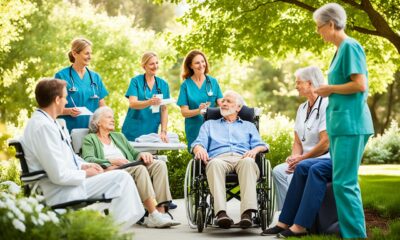
 Palliative Care for Parkinson's5 days ago
Palliative Care for Parkinson's5 days agoPalliative Care for Parkinson’s: A New Hope for Patients”
-
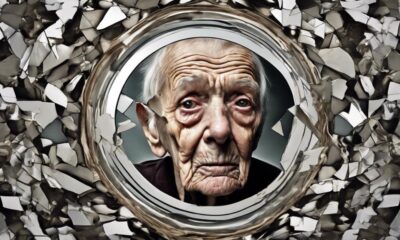
 Dementia Care2 months ago
Dementia Care2 months agoUnderstanding Narcissism and Dementia: A How-To Guide
-
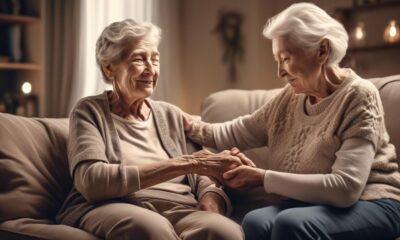
 Caregiving Issues3 weeks ago
Caregiving Issues3 weeks agoWhat Is Respite Care for Elderly?
-
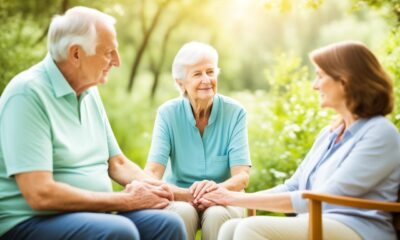
 Palliative Care for Parkinson's5 days ago
Palliative Care for Parkinson's5 days agoUnlocking the Secrets of Palliative Care for Parkinson’s Disease
